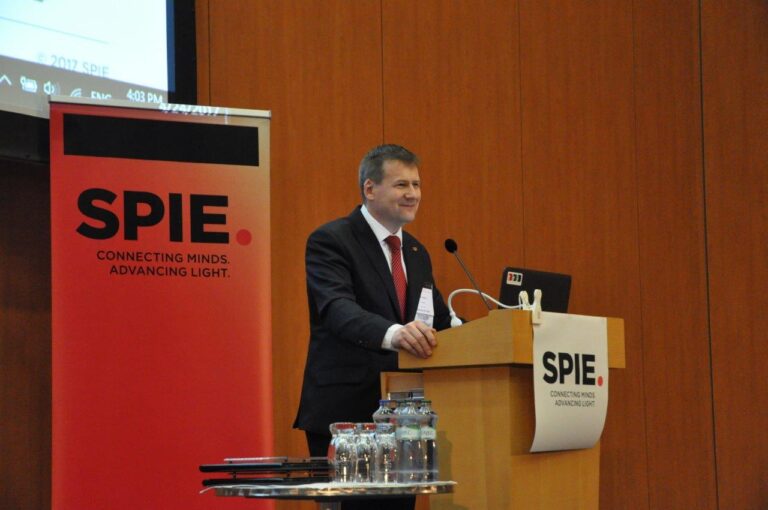Photonics has been identified by the European Commission as one of six so-called key enabling technologies (KETs) essential for the competitiveness of the European economy. The first day of the symposium focused in detail on the current status and plans for the pan-European Extreme Light Infrastructure (ELI) project, in which an international team of scientists is developing the world’s most powerful laser system. Once installed and operational, scientists will have a unique tool at their disposal for pioneering research not only in physics and materials science, but also in biomedicine and laboratory astrophysics.
“All the topics of the conference are current and globally important. Photonics, which deals with the properties and methods of using photons (light particles), is essential for the functioning of a wide variety of technologies in our everyday lives – from consumer products such as smartphones and displays, through communication systems, to medical devices and lighting technologies. It is great that the symposium is being held in the Czech Republic and that many Czech scientists are actively participating not only in the conference committees but also with their presentations at the symposium,” said Prof. Eva Zažímalová, President of the Czech Academy of Sciences, in her opening remarks.
“The SPIE Optics+Optoelectronics Symposium in Prague is unique in how successfully it connects basic research pushing the boundaries of human knowledge in optics and optoelectronics with advances in the development of optical technologies that have a major impact on many areas of life—from industry to medicine,” says Symposium Chair Prof. Jiří Homola from the Institute of Photonics and Electronics of the Czech Academy of Sciences.
This year’s SPIE Optics + Optoelectronics Symposium is attended by more than 700 delegates from 48 countries.

